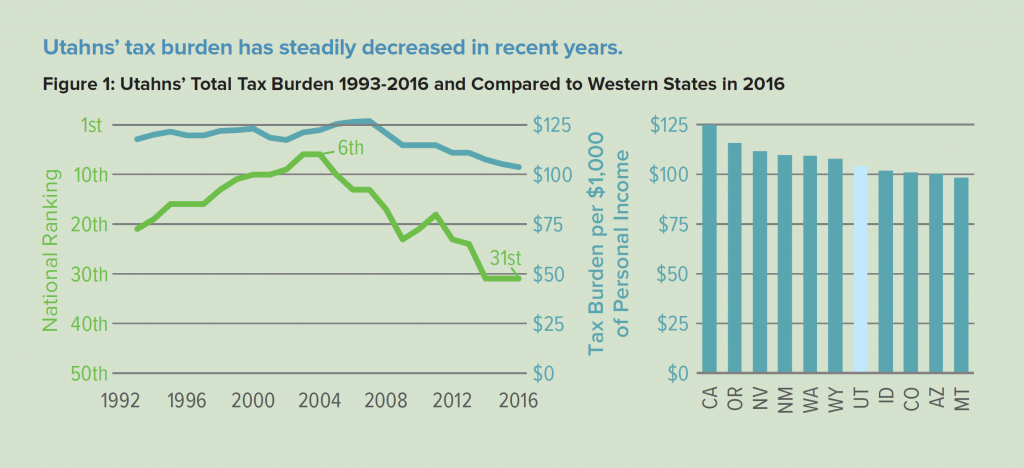Taxes and government spending are a top issue for Utah voters. Tax reform is a top priority for the Utah Legislature and administration. In early 2019, legislators attempted a sweeping tax reform, and have continued to discuss options throughout the year.
Utah’s tax burden has steadily decreased from 2007 to 2016. The corresponding decrease in state ranking signifies that this is not just part of a national trend. Among all states, Utah’s tax burden saw the sixth largest decrease over a decade.
KEY FINDINGS OF THIS REPORT
- Utah’s Tax burden in 2016 was the lowest in 25 years, at $103.86 per $1,000 of personal income.
- In 2003 and 2004, Utah had the sixth highest tax burden in the nation. By 2016, it had fallen to 31st.
- Utah’s falling sales tax burden was responsible for one-third of the total decline from 2007 to 2016.
- A primary factor in Utah’s falling tax burden is rising personal income. Utahns’ personal income increased by 51% between 2007 and 2016, the third-fastest increase in the nation.
- About one-third of the growth in personal income is from population growth, while two-thirds is from growth in per capita personal income. However, inflation accounts or about half of the increase in per capita income.
- Utah’s property tax burden is the only component to have increased from 2007 to 2016.
- Utah’s motor fuel tax burden has eroded since 1998 due to inflation and improved fuel efficiency. During the past decade, Utah saw one of the nation’s largest drops in fuel tax burden.
Utah also saw the third highest increase in personal income among states between 2007 and 2016. This was largely driven by Utah’s rapid population growth and above-average increases in per-capita personal income.
To the extent that Utah’s shrinking tax burden is attributable to higher levels of per capita personal income, it is welcome news. As incomes increase, Utahns are better off financially and have more discretionary income. However, to the extent that Utah’s falling tax burden is related to its population growth, it may indicate budgetary shortfalls if tax revenues are not increasing quickly enough to support basic services.


